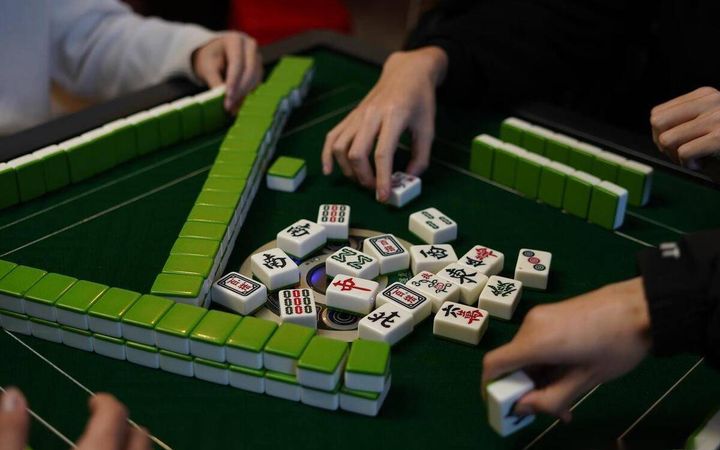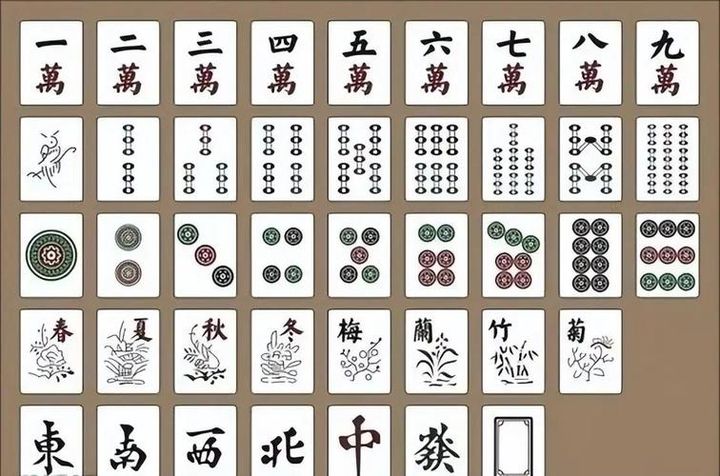Chinese Mahjong is a classic table game that has been enjoyed by people across China and around the world for centuries. With its intricate tiles, strategic gameplay, and social nature, Mahjong offers a unique and engaging experience that is hard to resist.
See Also: Get Chinese Mahjong on Amazon
The History of Chinese Mahjong
Mahjong has a long and storied history that dates back to the Qing Dynasty. Originally played by the imperial court and aristocrats, the game gradually spread to the general public and became a popular pastime. Over time, different variations of Mahjong emerged, each with its own unique rules and characteristics.
Mahjong Tiles

The heart of Mahjong is its set of tiles. There are three main types of tiles: suits, honors, and bonus tiles. Suits consist of bamboo, characters, and dots, each with numbers ranging from one to nine. Honors include winds (east, south, west, and north) and dragons (red, green, and white). Bonus tiles may include flowers and seasons.
Setting Up the Game
To start a game of Mahjong, the tiles are shuffled and stacked face down in the center of the table. Each player then draws a certain number of tiles to form their initial hand. The objective of the game is to form valid combinations of tiles and be the first player to reach a winning condition.
Gameplay Basics
In Mahjong, players take turns drawing and discarding tiles. The goal is to form melds, which are groups of three or four identical tiles or sequences of three consecutive tiles of the same suit. Melds can be formed by drawing a tile from the wall or by picking up a discarded tile from another player.
Special Melds and Combinations
There are several special melds and combinations in Mahjong that can earn players extra points or give them an advantage in the game. These include concealed hands, all-pairs hands, and special sequences. Players must be familiar with these combinations and know when to use them strategically.
Scoring and Winning Conditions
Scoring in Mahjong is based on the number and type of melds formed, as well as any special combinations or bonuses. The winning condition varies depending on the variation being played, but generally, a player must form a complete hand with a certain number of melds and a pair. Some variations also have specific requirements for the type of melds or combinations needed to win.
Strategy and Tactics
Playing Mahjong requires a combination of skill, strategy, and luck. Players must carefully manage their hands, make strategic decisions about which tiles to draw and discard, and pay attention to the actions of their opponents. They must also be able to adapt to changing circumstances and adjust their strategies accordingly.
Social Aspect of Mahjong
One of the great things about Mahjong is its social nature. The game is often played with friends and family, providing an opportunity for social interaction and bonding. It can be a fun and relaxing way to spend time with loved ones and enjoy some friendly competition.
In conclusion, Chinese Mahjong is a fascinating and enjoyable game that offers a unique blend of strategy, skill, and social interaction. Whether you’re a beginner or an experienced player, there’s always something new to learn and discover in the world of Mahjong. So gather your friends and family, shuffle the tiles, and embark on a thrilling journey into the world of Chinese Mahjong.
The Gameplay of Mahjong
Mahjong is a popular Chinese game that combines strategy, skill, and luck. Here are the basic rules and gameplay:
1. Components of Mahjong
Mahjong consists of 136 or 144 tiles, depending on the variation. The tiles are divided into three main categories:
1. Suits: There are three suits – dots, bamboo, and characters. Each suit has tiles numbered from one to nine.
2. Honors: This includes winds (east, south, west, north) and dragons (red, green, white).
3. Bonus tiles (in some variations): Such as flowers and seasons.
2. Setting Up the Game
1. The tiles are shuffled and stacked face down in the center of the table.
2. Each player draws a certain number of tiles to form their initial hand.
3. Gameplay
1. Turns: Players take turns in a clockwise direction.
2. Drawing a Tile: On your turn, you can either draw a tile from the wall (the stack of face-down tiles) or pick up a discarded tile from another player.
3. Discarding a Tile: After drawing a tile, if you don’t need it or can’t use it to form a valid combination, you must discard one tile by placing it face up in front of you.
4. Melds and Combinations
1. Melds are groups of tiles that form valid combinations. There are three types of melds:
– Pung: Three identical tiles.
– Chow: Three consecutive tiles of the same suit.
– Kong: Four identical tiles.
2. To win, you need to form a complete hand with a certain number of melds and a pair (two identical tiles).
5. Special Rules and Conditions
1. Declaring a Win: You can declare a win when you have a complete hand that meets the winning conditions. This is usually done by showing your hand to the other players.
2. Bonus Points: There are various situations that can earn you bonus points, such as having all honors in your hand or forming certain special combinations.
3. Dead Hands: In some cases, your hand may become invalid or “dead” if you violate certain rules or fail to meet certain conditions.
6. Scoring
Scoring in mahjong is based on the number and type of melds, bonus points, and the specific rules of the variation being played. Points are usually awarded to the winner and may also be deducted from players who make mistakes or have invalid hands.
Overall, mahjong is a complex and engaging game that requires both strategy and luck. It’s a great way to socialize with friends and family while enjoying a challenging and entertaining pastime.